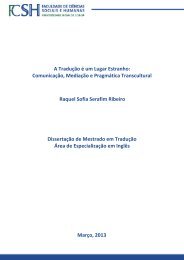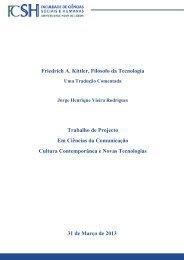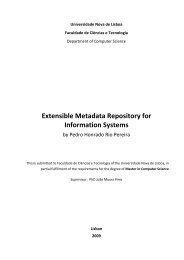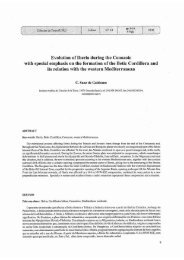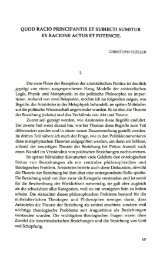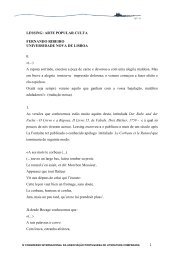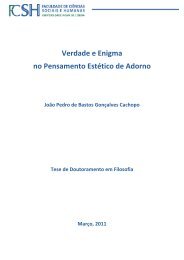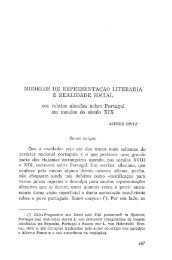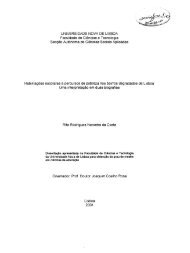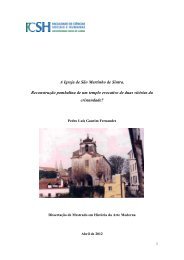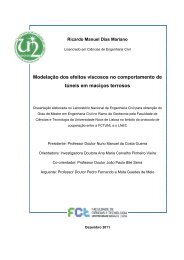PhD Thesis_RuiMSMartins.pdf - RUN UNL
PhD Thesis_RuiMSMartins.pdf - RUN UNL
PhD Thesis_RuiMSMartins.pdf - RUN UNL
Create successful ePaper yourself
Turn your PDF publications into a flip-book with our unique Google optimized e-Paper software.
In-situ XRD studies during growth of Ni-Ti SMA films and their complementary ex-situ characterization<br />
volume ratios allow a rapid heat transfer improving thus response speed. As films they have<br />
the additional potential for batch fabrication and, correspondingly, Ni-Ti films are attractive<br />
materials for microfabrication and integration in micro-miniature systems composed of<br />
mechanical elements, actuators, sensors and electronics made on one chip [28-30]. Due to<br />
their high power density, and due to the large displacement and actuation force, most<br />
applications of Ni-Ti films are focused on micro-actuators, such as micropumps,<br />
microgrippers, microvalves, micropositioners etc. [10]. Because of their sensitivity to<br />
environmental changes, e.g. thermal, and/or to stress they are also ideal materials for<br />
applications in microsensors [31].<br />
In a general way, for the production of films of a certain material, the choice of the<br />
deposition technique is normally based on fulfilling the requirements put forth by the sample<br />
properties as well on practical limitations such as cost, area of coverage and vacuum<br />
requirements. In this study, magnetron co-sputtering has been applied for depositing the Ni-Ti<br />
samples.<br />
Nonthermal growth techniques, such as sputtering, have proved to be among the most<br />
promising regarding the control of morphology and crystalline quality during film growth.<br />
This technique can lead to unusual and often advantageous growth kinetics and can force a<br />
film to grow under conditions far from thermal equilibrium. Melt-spinning is considered as<br />
well a non-equilibrium technique (the result may strongly depend upon the cooling rate) and it<br />
has been used by some researchers for the production of Ni-Ti ribbons [32, 33]. It allows also<br />
to obtain fine grains (rapid quenching) but it may be difficult to obtain reproducible results<br />
among different apparatus or among different researchers. Typically the thickness of meltspun<br />
ribbons is 30-40 µm. It is also possible to make strips as thin as 30 µm by cold rolling<br />
and, thus, melt-spinning technique and rolling technique may become competitive in the<br />
future [16]. Nevertheless, considering potential applications in the field of MEMS, sputter<br />
deposition technique is much more suited because the Ni-Ti films can be deposited directly on<br />
semiconductors or IC, and patterning can be as well incorporated using photoresist technique.<br />
A brief introduction to the sputtering technique, including growth and morphology of<br />
films in general, is presented in this section. There are also some considerations concerning<br />
the effects of ions bombardment, which are linked to this deposition technique, as well as the<br />
occurrence of stress in the films. Furthermore, the type of texture and their driving forces are<br />
discussed.<br />
Chapter 1 - Background and Literature Review 18



